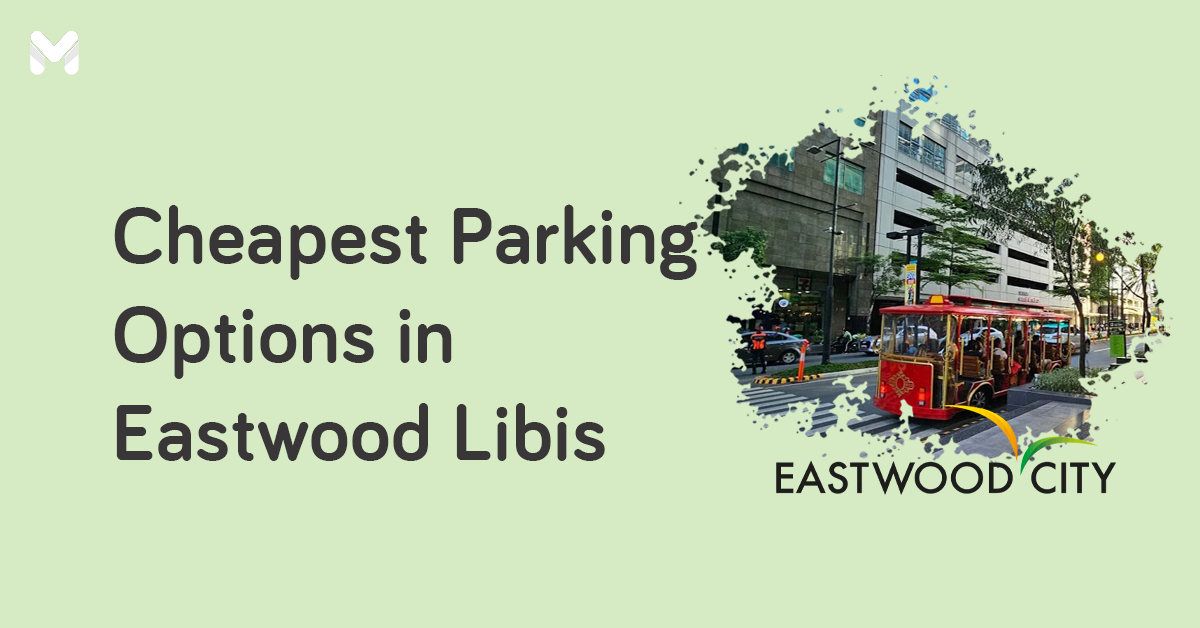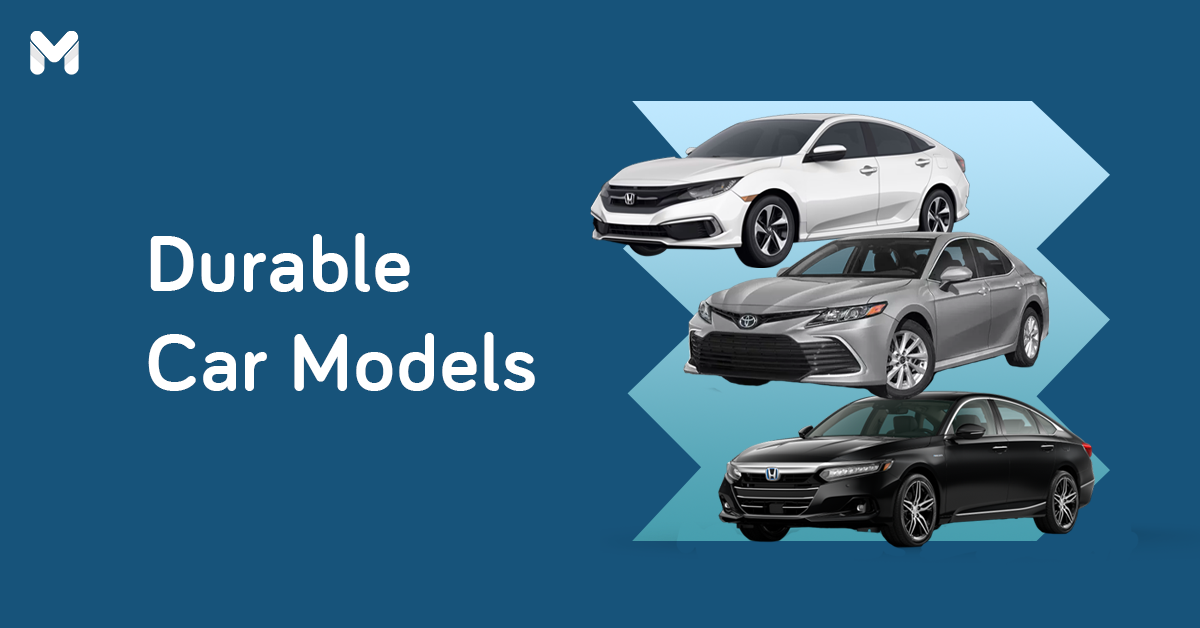Buying a brand-new car is both an exciting and expensive adventure. As more people get an increase in income and auto loans become easier to acquire, it’s no surprise that the automotive industry is on an upswing.
While a decent used car can get you from point A to point B, a brand-new car offers added features that can protect you better. A new car isn’t just a luxury, but an investment in the long run.
Learn the benefits of getting a brand-new car and tips to consider when shopping for a new ride.
Benefits of Buying a New Car
-May-29-2024-05-17-05-4199-AM.png?width=600&height=400&name=Pics%20for%20blog%20-%20600x400%20(19)-May-29-2024-05-17-05-4199-AM.png)
Purchasing a new car is a difficult decision to make. These points might just convince you to get one:
👍 Freedom of Choice
If budget isn’t a concern, you have unlimited options. You can get a vehicle that fits both your needs and wants. Compare this to used cars, with which you’re confined to the available units for sale.
👍 Mint Condition
With a brand-new car, you’re sure that the unit is in tip-top shape and has no hidden issues. You might spend more, but you’ll get a vehicle without the smallest of dents.
👍 New Features
Brand-new cars have—well—brand-new features. If you buy a 2024 model, it will have a sound system made for 2024. In contrast, buying a used car from the early 2000s will come with a stereo from that era.
Read more: Getting a New Ride? Here’s Your Guide to Different Types of Vehicle in the Philippines
👍 Improved Safety
Brand-new cars also offer the latest safety features, such as assisted parking and blind-spot monitoring, which you may not get with a used and older car. Manufacturers continually improve their vehicles’ safety features to comply with ever-evolving safety regulations.
👍 Peace of Mind
You don’t have to worry about your car breaking down in the middle of nowhere or giving up on you while you battle the rush hour traffic. That peace of mind is worth the extra money a new car requires.
👍 Full Warranty
A brand-new car comes with an unused factory warranty for a predetermined number of miles. Most car manufacturers offer three years of warranty, but some offer longer warranty coverage of up to five years.
👍 Customizable
Brand-new cars are like your favorite milk tea—you can customize it to your liking. Get it made to order with specs and features you prefer!
Want a black exterior? You got it. Keep in mind, however, that customizing a car comes with extra costs.
👍 Better Rates
Lenders may offer lower interest rates because a brand-new car hasn’t deteriorated yet. They can also use the vehicle as collateral should you default on your loan.
Disadvantages of Buying a New Car
-May-29-2024-05-18-32-9786-AM.png?width=600&height=400&name=Pics%20for%20blog%20-%20600x400%20(20)-May-29-2024-05-18-32-9786-AM.png)
However, buying a new car is not without its share of drawbacks. Take these things into account:
👎 High Cost
A brand-new car costs more compared to a used one. Yes, you can save some money when you fully pay for it in cash. But if you’re applying for a loan, consider the interest charges.
Ultimately, you’ll be paying more than the actual retail price.
👎 Quick Depreciation
The moment the car leaves the dealership, it starts to depreciate. A new car loses 15% to 20% of its value. So if you buy a car worth ₱900,000, its value will depreciate to ₱765,000 a few months after the purchase.
While the value of your new car depreciates, you still need to pay for the retail price in amortization plus interest. Unfortunately, that’s the reality of car ownership.
👎 Expensive Insurance
New cars are usually expensive to insure. Comprehensive car insurance costs also get higher if you get a more expensive unit, such as an SUV or a sports car.
👎 Reliability-Related Issues
Despite the mint condition of a brand-new car, reliability isn’t guaranteed, especially for newer models. There’s always the possibility of a recall,[1] which spells headaches on your end.
Things to Consider When Buying A New Car
-May-29-2024-05-19-33-0924-AM.png?width=600&height=400&name=Pics%20for%20blog%20-%20600x400%20(21)-May-29-2024-05-19-33-0924-AM.png)
Keep these factors in mind before you purchase a new car:
📌 Fuel Efficiency
The price of a car is a one-time expense, but regular fuel consumption isn’t. Consider the vehicle’s fuel economics when buying a brand-new car. Gasoline expenses can cost as much as feeding two children for a month!
Read more: Save While Driving: 23 Most Fuel-Efficient Cars in the Philippines
📌 Power and Performance
Power and performance are important factors every car buyer should consider. Make sure to pick a car with high engine performance.
📌 Safety Systems
Consider the car’s safety devices, features, and technology. Most new cars come with advanced safety features, such as automatic parking and backup cameras. Choose a brand-new car that meets your needs.
Read more: Car Safety Features: Does Your Vehicle Have Them All?
📌 Insurance and Warranty
Purchasing a brand-new car entitles you to discounts or free comprehensive car insurance. You may even get extended warranties and other perks.
📌 Cost of Ownership
Always consider the additional ownership costs when buying a brand-new car. Aside from fuel, factor in the price of insurance and maintenance when estimating the amount you need for your new ride.
📌 Brand
Popular brands are expensive for a reason. Most of these brands produce cars with killer engines and advanced fuel efficiency features.
Consider the brand of the car you’re eyeing and compare it to other manufacturers in the market. Research the brand and read reviews online.
📌 Resale Value
Resale value refers to the value of the car after it depreciates over time. While it's tempting to purchase a new car on sale, do your research beforehand and determine which cars have greater resale values.
How to Buy a New Car in the Philippines in Six Steps
-May-29-2024-05-21-36-0407-AM.png?width=600&height=400&name=Pics%20for%20blog%20-%20600x400%20(22)-May-29-2024-05-21-36-0407-AM.png)
Buying a car in the Philippines? Ensure a smooth-sailing purchase and follow these steps:
Step 1: Look at Your Lifestyle
To maximize your car in the long run, choose a unit that fits your lifestyle like a glove.
For instance, get a seven-seater multi-purpose vehicle (MPV) if you have a family. A pick-up truck is a practical choice if you run a hauling business or love exploring during the weekend. And if you live in the city, a hatchback can help you navigate traffic jams[2] and easily find a parking spot.
Step 2: Do Your Research
Once you choose the car that suits your lifestyle, research the offerings of different car brands. Look into consumer reports and online reviews to learn which cars perform the best and which ones don’t.
In the process, you also spot potential issues that may ensue with your desired car.
Read more: The Right Ride for the Right Price: 25 Cheapest Cars in 2024
Step 3: Compute Your Budget and Decide on Financing Options
At this point, you probably already have a specific car and brand in mind. You also know the price of your desired brand-new car in the Philippines. The next step would be to compute how much you’re willing to shell out to finance the car.
If you have the money, consider buying the car in cash. Otherwise, consider the following options:
- In-house financing - In this scheme, the car dealership directly offers the loan. Approvals are usually quicker than that of bank loans, but interest rates tend to be steep.
- Bank financing - The bank finances the rest of the payment. Interest rates are usually lower than those offered by dealers. However, approvals tend to be stringent and time-consuming.
Step 4: Test-Drive The Car
Sure, online videos give you an idea of how the car feels, but it’s a lot different when you drive it yourself. Test driving will help you determine whether the car feels comfortable.
Here are some guidelines when test driving:
- The vehicle should stay silent and smooth when idle.
- The view from the mirrors should be acceptable. You can view all the dashboard gauges easily.
- The controls should work perfectly.
- The handles and brakes should respond when you push the accelerator and brakes.
Step 5: Apply for Financing
If the test drive meets your expectations, get your finances in order. Start your car loan application if you already have a bank in mind. To secure the car, make a down payment.
Step 6: Sign the Documents
A car purchase doesn’t end with getting the loan application approval and settling the down payment. You still need to go over the purchase contract and read fine print elements like fees, interest rates, payment terms, and more.
Clarify ambiguous terms with your dealership and the bank. Once done, sign all the paperwork.
Read more: New Drive for Newbies: 10 Best Cars for Beginners in the Philippines
Tips for Buying a Brand-New Car in the Philippines
-May-29-2024-05-22-24-3308-AM.png?width=600&height=400&name=Pics%20for%20blog%20-%20600x400%20(23)-May-29-2024-05-22-24-3308-AM.png)
Here are additional insights to help you make a smarter decision when buying a new car:
✅ Buy a Car You Can Afford
Just because you’re getting a car loan doesn’t mean you can get the priciest of the bunch. Assess whether or not you can really afford a brand-new car. You don’t want to drown in debt.
Determine how much you need to allot for your monthly car loan payments. Would it put a dent in your savings? Would it drastically change your lifestyle for the worse?
Make sure you’re not putting your financial health at risk. Buy within your means.
✅ Forego the Add-Ons
A brand-new car is a major purchase. Paying it off can take years.
The overall cost of a car will increase if you choose to add accessories and features. Keep the add-ons to a minimum and get only features you’re absolutely sure you need.
✅ Get Pre-Approved
If you’re getting an auto loan, try to get a pre-approval to get a jump on interest rates. Compare the interest rate with a car dealership’s financing so you can see which one has a better and more affordable annual percentage rate.
✅ Ask About Discounts and Special Offers
Both car dealerships and banks usually offer discounts and offers. For instance, a car dealership may offer promos like low down payment and free insurance for one year. Banks, on the other hand, may offer special interest rates, especially if you have a good credit score.
Sometimes, these deals aren’t openly advertised, so ask the sales agent and the loan officer about them. This practical car-buying tip will help you save money in the long run.
✅ Make a Large Down Payment
If you have the cash, make a large down payment to reduce the loan amount. In turn, this will lessen your monthly payments. And if you have a shorter payment term, you pay less interest.
Related: Need a Car ASAP? Check Out These Low Down Payment Cars
✅ Be Wary of Dealerships That Decline Full Cash Payment
You may encounter a car dealer who declines a full cash payment or pushes you to choose in-house financing instead. This may confuse you—after all, don’t they want to close a deal in full?
However, car dealerships make more money through in-house financing. That’s because they earn interest from your payments. If the dealership declines your offer to pay in full cash, walk away.
Better yet, report them to the Department of Trade and Industry (DTI). According to an administrative order from the DTI, an installment-only option is strictly prohibited.[3]
✅ Choose the Shortest Payment Term
While your monthly payment will be higher, you’ll cut your interest payment short. If you want to take this route, prepare to cut corners, get side gigs, or sell things you don’t need.
✅ Bring Someone With You
It’s easy to get swayed by the many promises a sales agent tells you, especially if this is your first time buying a car. Bring someone who can help you compare features, prices, perks, and financing options. They’ll help you navigate the process of buying a car.
Final Thoughts
Remember: when buying a new car, looks aren’t all that matter. Make sure to factor in the price, power and performance, fuel efficiency, and overall cost of ownership. Determine what you need in a car and the add-ons you can do away with.
Test drive the vehicle before sealing the deal. If it doesn’t feel right, don’t be afraid to start from scratch again. A brand-new car is a huge responsibility—choose one you’re completely on board with.
💸 Compare Personal Loans via Moneymax
Did you know that aside from auto loans, you can use personal loans to buy a car? Compare your options and apply via Moneymax:
|
Provider
|
Loan Amount
|
Monthly Add-on Rate
|
Loan Term
|
Minimum Annual Income
|
Approval Time
|
|---|---|---|---|---|---|
|
UnionBank Personal Loan
|
Up to ₱2 million
|
26.9% per annum
|
12 to 60 months
|
₱250,000
|
As fast as 5 minutes
|
|
UNO Digital Bank Personal Loan
.png?width=149&height=52&name=Unobank-Logo-Colored_Horizontal-Medium%20(for%20MMX).png) |
₱10,000 to ₱500,000
|
1.79% per month (corresponds to annual contractual rates or annual percentage rates ranging from 35.78% to 37.54%)
|
Six to 36 months
|
₱240,000
|
Five to seven banking days
|
|
Metrobank Personal Loan
|
₱20,000 to ₱2 million
|
1.25% to 1.75%
|
36 months
|
₱350,000
|
Seven banking days
|
|
BPI Personal Loan
 |
₱20,000 to ₱3 million
|
Maximum annual contractual rate of 28.67%
|
12 to 36 months
|
Inquire with BPI
|
Five to seven banking days
|
|
Tonik Credit Builder
 |
₱5,000 to ₱20,000
|
4.84%
|
Six to 12 months
|
Inquire with Tonik
|
Two banking days
|
|
Tala

|
₱1,000 to ₱25,000
|
0.43% daily
|
Up to 61 days
|
None
|
Five minutes to 24 hours
|
|
HSBC Personal Loan
|
₱30,000 to ₱500,000
|
0.65%
|
Six to 36 months
|
₱168,000
|
Five to seven banking days
|
|
CIMB Personal Loan
|
₱30,000 to ₱1 million
|
As low as 0.83%
|
12 to 60 months
|
₱180,000
|
One to two banking days
|
|
Maybank Personal Loan
|
Up to ₱1 million
|
1.3%
|
Up to 36 months
|
₱300,000
|
Inquire with Maybank
|
|
RCBC Bank Personal Loan
 |
₱50,000 to ₱1 million
|
1.3%
|
Six to 36 months
|
₱360,000
|
5 to 7 banking days
|
|
PSBank Personal Loan
 |
₱20,000 to ₱250,000
|
|
24 or 36 months
|
₱180,000
|
Five to nine banking days
|
Sources:
- [1] Toyota PH Recalls Over 3,000 Land Cruiser 300, Lexus LX Vehicles (Bilyonaryo, 2024)
- [2] MMDA: Traffic Jams a ‘Decade-Old Problem’ (The Philippine Star, 2024)
- [3] DTI Releases Guidelines on Payment Options









